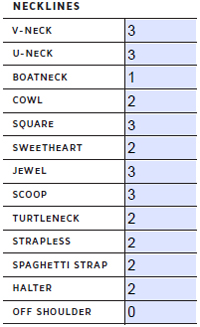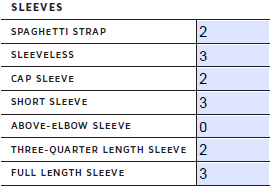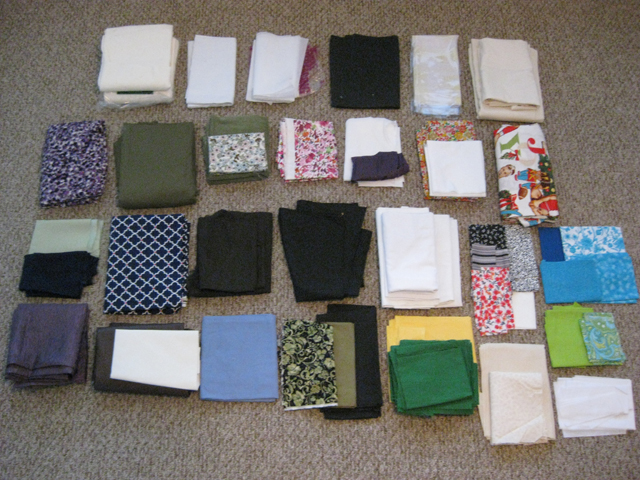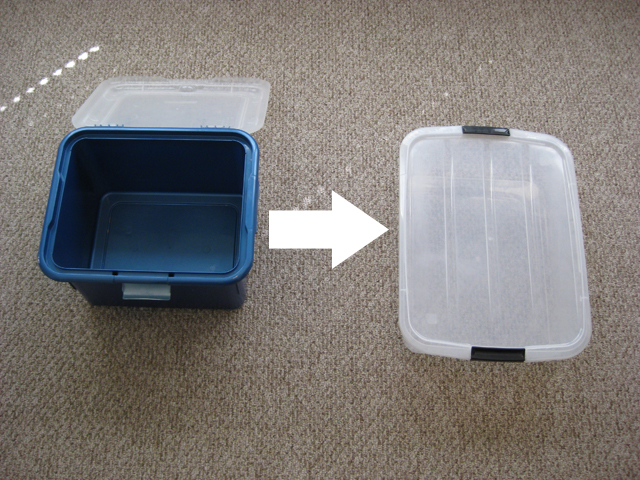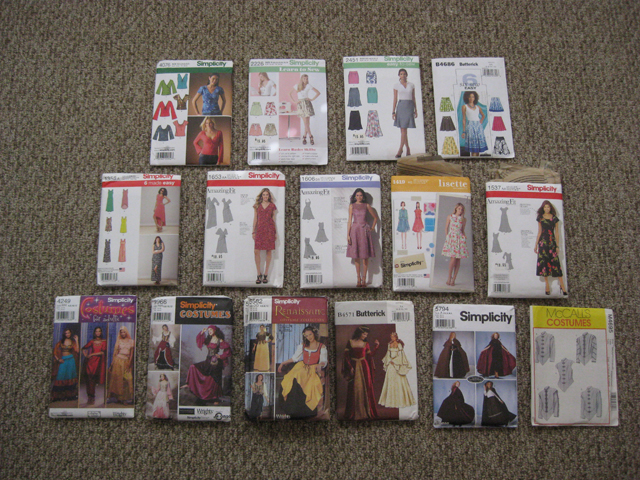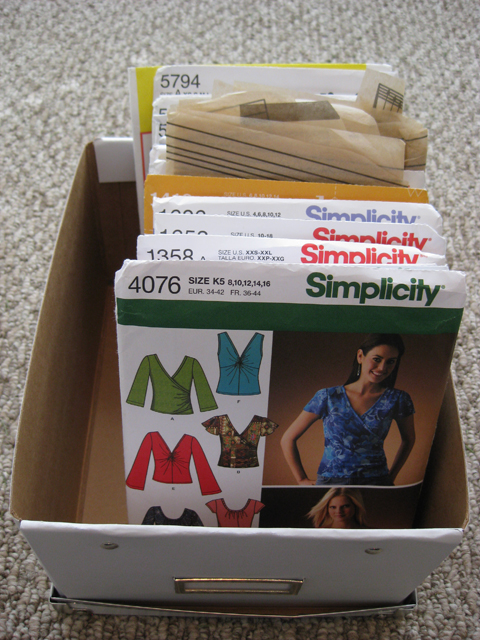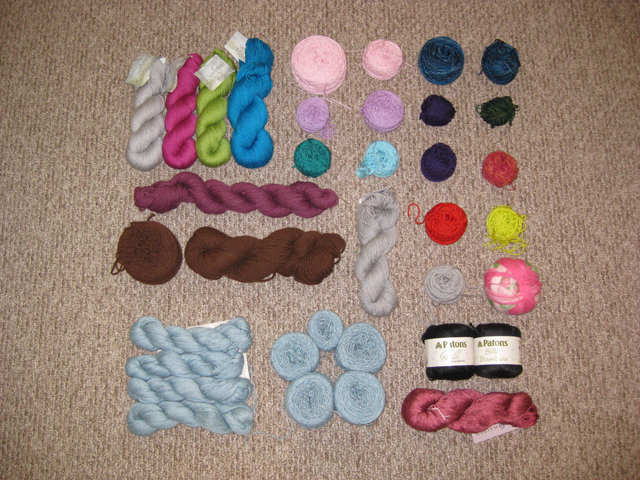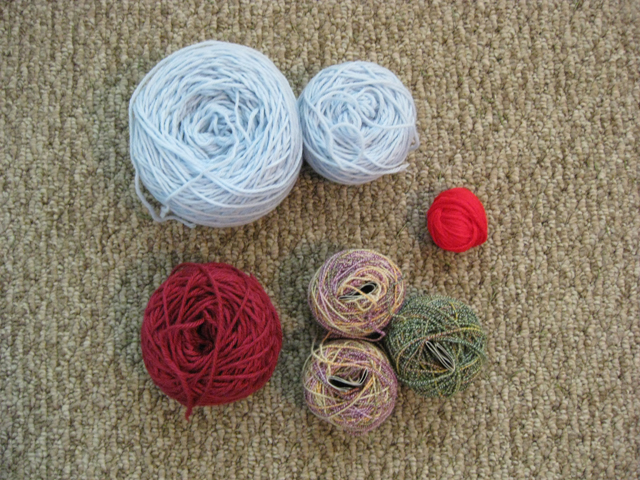After I spent last week focusing on the clothing shapes that I enjoy wearing, I decided that this week I would bust out my camera and Amy Herzog‘s Knit to Flatter and spend some time getting familiar with my own shape. Unlike basically everyone I’ve ever met, I love having my picture taken. If I see a camera coming, I do not dive behind the nearest person/piece of furniture/houseplant and pretend like I’m invisible—I beam like someone has just rolled out the red carpet for me personally. I’m also not shy around mirrors, although in my defense, it’s usually because I’m having a Hermione-ish “Is that what my hair looks like from the back?” moment.
At least, I normally love having my picture taken. There were declarations of love and self-acceptance and empowered fist pumping right up until the moment I dumped the photos on my computer and opened them up. In addition to cringing at the picture quality, I spent several minutes questioning whether this exercise was still a good idea.
I don’t have any issues with my measurements or weight—they’re just numbers, and having the right ones are essential to getting clothes that actually fit. But for some reason scrutinizing my shape, which is supposed to be a lot less emotionally charged, since according to Amy understanding your shape is the starting point for creating visual balance through clothing, was more than a little uncomfortable.
It’s not that my shape is a surprise or revelation. I’ve understood for a while now that I have a straight proportional figure, which is confirmed by the lines on the photo below:
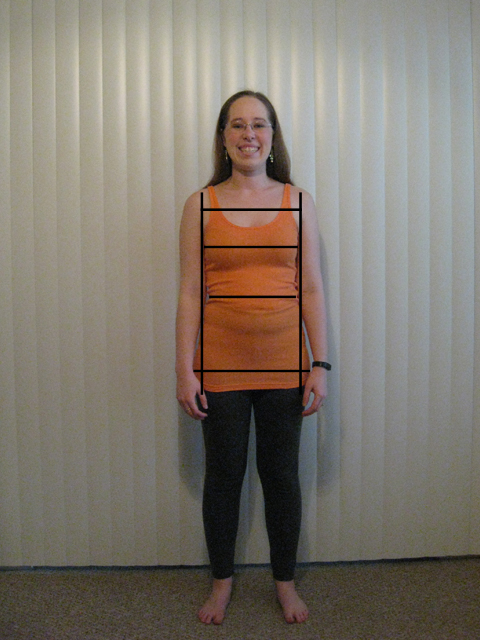 The awkward wrinkle near my bellybutton is the waistband of my leggings, which I pulled up to avoid creating a mini muffin top.
The awkward wrinkle near my bellybutton is the waistband of my leggings, which I pulled up to avoid creating a mini muffin top.
Looking at the side view, I can add that I have an average-sized bust, a curvy booty, and a little extra tum to (literally) round things out.
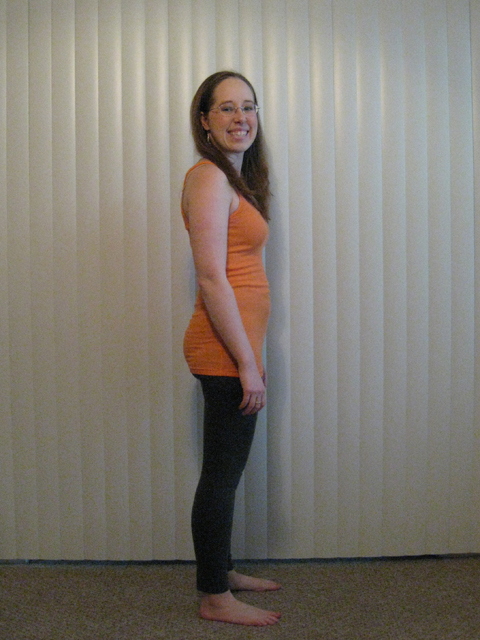 In truth, it was hard not too look at that photo and think, “My stomach sticks out as far as my chest.” Which may be true, but then I have to ask myself why that matters so much. I’ve never had washboard abs, and it’s not really a thing I aspire to anyway. (I hate ab workouts; you can’t lift heavy things with your abs, you know?) While I certainly do need to be more active, because I understand the risks of the sedentary lifestyle of an office dweller and I definitely start to feel lethargic and heavy when I do nothing but sit all day, I also understand that I’m not physically unfit, either.
In truth, it was hard not too look at that photo and think, “My stomach sticks out as far as my chest.” Which may be true, but then I have to ask myself why that matters so much. I’ve never had washboard abs, and it’s not really a thing I aspire to anyway. (I hate ab workouts; you can’t lift heavy things with your abs, you know?) While I certainly do need to be more active, because I understand the risks of the sedentary lifestyle of an office dweller and I definitely start to feel lethargic and heavy when I do nothing but sit all day, I also understand that I’m not physically unfit, either.
Also, let’s get real—how often do I or anyone else I know walk around in nothing but spandex that clings to every curve? (Okay, so this is basically my at-home uniform, but I don’t make a habit of going out in public like this.) No one else is looking at me this closely and sizing up whether I’d look better in a v-neck or crew-neck sweater. A healthy body, clad in clothes that fit well and a happy smile, is all that matters.
I had to repeat that to myself a few times before it really started to sink in. Admiring a gallery of photos of my favorite short, curvy sewing blogger, who is hilariously funny and completely fearless, definitely helped. And reminding myself that I already have too many hobbies to juggle without adding “worry about body image” to the list was the final kick in the pants I needed to get back to focusing on the fact that I’m on a journey toward a more awesome wardrobe, not a one-way trip to Sad Town—so enough criticizing!
Based on my shape and extra features, Knit to Flatter recommends the following elements to maintain the balanced proportions I have:
- High-hip or mid-hip length sweaters with deep, narrow necklines and elbow-length or longer sleeves
- Sweaters with an interesting hem treatment to balance wide necklines and three-quarter sleeves
- Short or average length sweaters with plain hems to complement crew necks or turtlenecks with any length sleeves
Of the three, the first and third options are the ones I tend to gravitate toward, and are the ones most represented in my closet already. Knit to Flatter doesn’t address pants (because it’s a sweater knitting book), but I’m finding that it’s best to wear heeled boots or pumps with slightly flared pants and stick to skinny pants whenever I wear flats. Straight or wide-legged pants don’t really do my short frame any favors, even with heels, so I generally avoid them.
If I throw all of the information about the shape I am, the shapes that make me look balanced, and the shapes I like to wear into a blender, I should be able to come up with plenty of silhouettes for next week’s assignment no problem, right?


